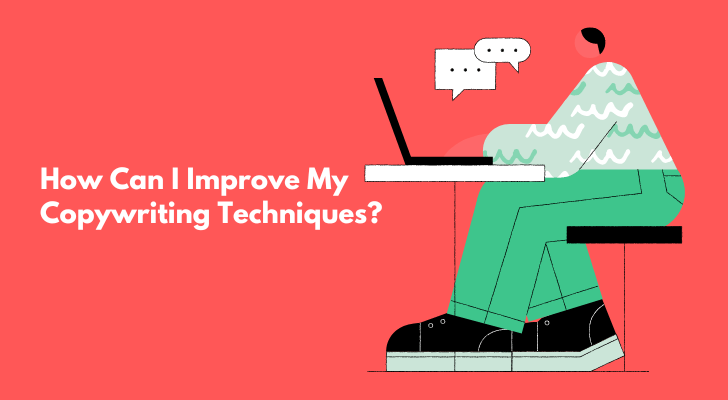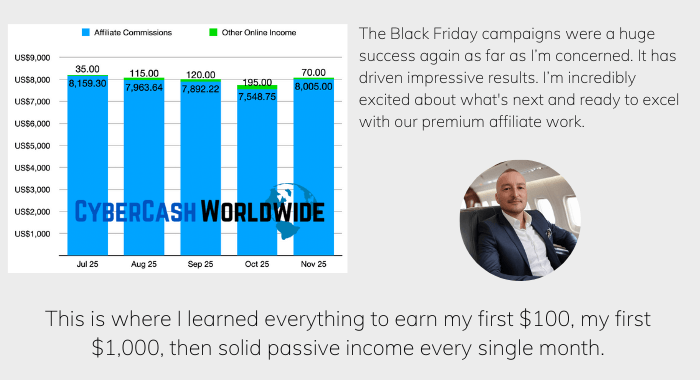Copywriting is a skill that allows you to create powerful, persuasive messages for a variety of different occasions. You need it to capture the attention of potential customers and get them to take action. Are you struggling to capture the attention of your target audience with your copywriting? Do you find yourself staring at a blank screen, unsure of where to start or how to improve?
Let's take a look at some good copywriting techniques for different occasions so that you can craft compelling campaigns for maximum impact. Here’s how to write headlines and body copy that stands out from competitors and grabs your target audience’s attention.
Copywriting is not just about writing, but the use of visuals and formatting styles are closely linked, so your message will be more appealing and easy to read. We can take a look at things like that in this post. I hope you’ll be able to create effective copywriting campaigns no matter what occasion or platform it needs to be tailored for!

Did You Know?
- Content Marketing's ROI: Content marketing generates over three times as many leads as outbound marketing and costs 62% less.
- Headline Power: On average, 8 out of 10 people will read headline copy, but only 2 out of 10 will read the rest.
- User Engagement: Content with relevant images gets 94% more views than content without.
- Conversion Rates: Websites with blog content have conversion rates nearly 6 times higher than websites without.
- Video Content: Including a video on a landing page can increase conversions by more than 80%.
The Copywriting Basics
Improving your copywriting techniques can help you create more persuasive content that resonates with your target audience.
You'll learn how to use powerful words, construct compelling stories, and engage readers with personal anecdotes. You also focus on using language that appeals to the emotions of your audience in order to drive home a point or make a call to action even more impactful. With practice and dedication, you’ll soon become an expert at crafting effective copy that engages readers and drives conversions.
Here are the things to do to improve your copywriting skills:
- Analyze successful copy: Take the time to read and analyze copy that you find persuasive and effective. Look for patterns in the structure, tone, and language used.
- Understand your visitomers: You need to know your target visitomers to write copy that resonates with them. Research to understand their pain points, interests, and values.
- Keep it simple and concise: Effective copywriting is clear and to the point. Simple language, short sentences, and no jargon.
- Focus on benefits: People are more likely to buy products that offer them benefits. Highlight the benefits of your product in your copy.
- Use persuasive language: Your copy should be persuasive and engaging. Use words and phrases that encourage action, such as "limited time offer" or "act now."
- Use storytelling: People love stories, and incorporating stories into your copy can help create an emotional connection with users.
- Edit ruthlessly: Edit your copy to eliminate any unnecessary words or phrases that detract from your message. Every word should have a purpose.
Did You Know?
- SEO: Updating and republishing old blog posts with new content and images can increase organic traffic by as much as 106%.
- Mobile Optimization: 88% of consumers are less likely to return to a site after a bad experience, often related to mobile usability.
- Email Marketing: Email subject lines that include the words "thank you" have the highest above-average engagement levels.
- Social Proof: 50% of adults find UGC (user-generated content) more memorable than brand-produced content.
- Reading Level: The average American reads at a 7th-8th-grade level. Simplifying your copy can broaden your audience.
CyberCash Wonderland

"Darling, I gotta find a good piece of copywriting."
"Could that protect me from the pain?"
"I see you're gaga-ing. I would battle for you, even if we break in two. Coz all I ever wanted is love, and people want stupid love."
"Freak out, freak out, freak out, look at me nowwww."
Copywriting For Various Occasions
There are several types of copywriting, each with its own unique purpose and style. Here are some of the typical types;
Direct Response Copywriting
Direct response copywriting is designed to elicit an immediate response from the reader, usually in the form of making a purchase, signing up for a free trial, or filling out a lead generation form. The goal of direct response copywriting is to persuade the reader to take action right away.
Direct response copywriting typically employs a variety of persuasive techniques, such as
- Using compelling headlines,
- Emphasizing the benefits of a product,
- Addressing the reader's pain points or concerns, and
- Creating a sense of urgency.
This type of copywriting is often used in direct mail campaigns, email marketing, and landing pages. Inevitably, the call-to-action (CTA) is a crucial component. The CTA should be clear and specific, with a strong sense of urgency, and positioned prominently within the copy.
Direct response copywriting is highly measurable, with clear metrics such as response rates, conversion rates, and ROI. This makes it a popular choice for businesses looking to drive immediate results from their marketing efforts.
Effective direct-response copywriting requires a deep understanding of users, their pain points and motivations, and the value proposition of the product being offered. By crafting persuasive and compelling copy, direct response copywriting can be an effective way to generate leads and drive sales.
Advertising Copywriting

Advertising copywriting is used in various forms of advertising, such as print ads, digital ads, social media ads, and outdoor ads. The main goal of advertising copywriting is to persuade people to take action, such as purchasing a product, visiting a website, or contacting a business. It typically employs a variety of persuasive techniques, such as;
- Using attention-grabbing headlines,
- Highlighting the benefits of a product,
- Creating a sense of urgency, and
- Appealing to the reader's emotions.
The copy should be concise, clear, and easy to understand, while still being engaging and persuasive.
In advertising copywriting, the visuals and design elements are also crucial components that work in tandem with the copy to create an effective ad. The copy and visuals should work together to capture people's attention and convey the message effectively.
Advertising copywriting is a highly competitive field, and it requires creativity, strong writing skills, and the ability to think outside the box. By crafting persuasive and compelling copy, advertising copywriting can be an effective way to drive brand awareness, generate leads, and drive sales.
Did You Know?
- Content Length: The ideal length of a blog post for SEO is between 2,100 and 2,400 words in 2020 studies.
- Voice Search: 71% of consumers prefer to use voice search than typing their queries.
- Personalization: 72% of consumers say they only engage with personalized messaging.
- Email Campaigns: Personalized email campaigns receive 29% higher email open rates and 41% higher click-through rates than standard emails.
- B2B Content: 47% of B2B buyers consume three to five pieces of content before engaging with a salesperson.
Email Copywriting

Email copywriting is focused on creating compelling and persuasive emails that encourage the recipient to take a specific action, such as making a purchase, signing up for a newsletter, or registering for an event. The goal of email copywriting is to engage the recipient and provide them with a value that encourages them to take action.
The email subject line should grab the recipient's attention and encourage them to open the email. Whereas the body of the email should be concise and focused, providing the recipient with a value that is relevant to their interests and needs. This could include product information, promotional offers, educational content, or other valuable information.
Effective email copywriting also includes a CTA that clearly communicates the action that the recipient should take, and provides them with the necessary information and links to take that action.
Email copywriting can be used for a variety of purposes, including sales and promotions, lead generation, customer engagement, and more. By creating compelling and personalized email copy, brands can improve their email open and click-through rates, increase customer engagement and loyalty, and ultimately, drive sales and revenue.
CyberCash Wonderland

"Don't think that 'scarcity tactic' nonsense worked on little ol' me! I saw right through it! 'Limited edition' they said? 'Only 5 left!' They probably have a whole warehouse full of that junk!
But you know what? I showed them! I bought every. single. one. Every juicer, foot massager, and stupid singing fake Barbie they had!
You just wait, mister, when you see the credit card bill, your jaw will drop faster than a cheap earring!"
Did You Know?
- Influencer Impact: Influencer marketing content delivers 11x higher ROI than traditional forms of digital marketing.
- User Attention Span: The average page visit lasts less than a minute; the first 10-20 seconds are crucial to keep them engaged.
- CTA (Call to Action): Emails with a single call-to-action can increase clicks by 371% and sales by 1617%.
- Storytelling: Messages delivered as stories can be up to 22 times more memorable than just facts.
- Content Authenticity: 86% of consumers say authenticity is important when deciding what brands they like and support.
SEO Copywriting
SEO copywriting technique is one that you just cannot write out of your creativity without knowing the rules. It’s focused on creating content that is optimized for search engines while still being engaging and informative for the reader. The goal of SEO copywriting is to improve the visibility of a website or web page in search engine results pages (SERPs) by incorporating relevant keywords and phrases into the content.
SEO copywriting typically involves researching and identifying relevant keywords and phrases that are likely to be used by the users when searching for information related to a particular topic or industry. These keywords are then strategically incorporated into the copy, including in the title, headings, subheadings, and body of the content.
Note that keyword stuffing and other black hat SEO tactics are not effective in the long run and can actually harm the website's search engine rankings. The technique also requires an understanding of on-page optimization techniques, such as optimizing meta tags, images, and URLs, as well as off-page optimization techniques, such as building backlinks and social media promotion.
SEO copywriting can be used for a variety of content types, including blog posts, articles, product descriptions, landing pages, and more. By incorporating relevant keywords and optimizing the content for search engines, SEO copywriting can help improve a website's search engine rankings, drive organic traffic, and ultimately, generate leads and sales.
What Do You Advocate?
Brand Copywriting
Brand copywriting is about creating content that reflects and communicates the brand's values, personality, and identity. The goal of brand copywriting is to build a strong and consistent brand voice that resonates with the target visitomers and creates a memorable impression. In other words, it involves developing a brand messaging strategy that outlines the key messages and values that the brand wants to convey to its audience.
This strategy guides the creation of all brand content, including website copy, social media posts, email marketing, advertising, etc.
Effective brand copywriting requires a deep understanding of the brand's target visitomers, as well as the brand's unique selling proposition (USP) and competitive advantages. The copy should be tailored to their preferences and should speak to their interests and concerns, while still maintaining the brand's voice and identity.
In brand copywriting, consistency is key. All brand content should be consistent in terms of messaging, tone, and style, in order to build brand recognition and loyalty. This consistency helps to reinforce the brand's identity and creates a strong impression in the minds of users.
Brand copywriting can be used for a variety of content types, including taglines, brand stories, mission statements, about pages, and more. By creating a strong and consistent brand voice through effective copywriting, brands can build trust and loyalty with buyers, differentiate themselves from competitors, and ultimately, drive sales and revenue.
Social Media Copywriting
Social media copywriting involves creating various types of content, including posts, tweets, captions, and more. The copy should be attention-grabbing, concise, and informative, and should include a clear CTA that encourages followers to engage with the brand.
In social media copywriting, visual elements such as images, videos, and GIFs are often used to enhance the copy and grab people's attention. Hashtags and emojis can also be used to increase visibility and engagement.
Social media copywriting can be used for a variety of purposes, including brand awareness, lead generation, customer engagement, and more. By creating engaging and effective social media copy, brands can increase their visibility and reach on social media, build brand loyalty and trust, and ultimately, drive sales and revenue.
Supercharge Your AWeber Account
Take Your Email Marketing To The Next Level With These Powerful Tools
Copywriting for Your Business vs. For Clients
When writing copy for your own business, you have more freedom to infuse your personality and brand voice into the copy. You can create a unique style and tone that aligns with your brand values and resonates with people.
But when writing copy for clients, their brand voice and tone must be taken into consideration. You need to ensure that your copy aligns with their brand values. This may require you to adapt your writing style to match their brand voice and tone, rather than your own.
Formatting Styles
Formatting styles in copywriting refer to the way that text is visually presented on a page, which can impact the readability and overall effectiveness of the copy. Here are some common formatting styles in copywriting:
- Headlines and subheadlines: These are typically larger and bolder than the main body text, and are used to grab the reader's attention and break up the copy into more manageable chunks.
- Body text: The main body of the copy should be formatted in a way that makes it easy to read and follow. This may include using shorter paragraphs, bullet points, or numbered lists.
- Font style and size: The font style and size used in copywriting should be legible and consistent throughout the text. Sans-serif fonts like Arial or Helvetica are often preferred for digital copywriting, as they are easier to read on screens.
- Emphasis: Using bold or italicized text can help to emphasize important points or key phrases in the copy. However, it's important not to overuse these formatting styles, as it can make the text appear cluttered and difficult to read.
- White space: Leaving ample white space around text can make it more visually appealing and easier to read. This can be achieved by increasing the line spacing or adding margins to the page.
Follow all that, and you can improve the readability and overall impact of your copy. When formatting your copy, it's important to consider the medium in which it will be read (e.g. digital vs. print) and the preferences.
How to Write Compelling Headlines and Subheadlines

Headlines use compelling language to evoke curiosity and appeal to the reader's interests and desires. They also promise a solution or benefit, which can be a powerful motivator for readers to click and read more. When creating your own headlines, focus on the main benefit or solution you are offering.
Subheadlines, also known as subheads, are a great way to break up the text and make it more scannable for readers. They also provide an opportunity to add more detail and context to the main headline.
Here are some examples of compelling headlines and subheads:
- Main headline: "Get More Done in Less Time: 10 Unexpected Ways to Boost Your Productivity"
- Subheadline: "From breaking bad habits to prioritizing tasks, these tips will help you reclaim your time and achieve more."
- Main headline: "Unlock the Secrets to Perfect Skin: Expert Tips for a Flawless Complexion"
- Subheadline: "Do you know the best techniques and treatments for your skin type? Top skincare tips are here for you."
- Main headline: "Transforming Your Space with Mindful Decor: A Guide to Creating a Relaxing Oasis at Home"
- Subheadline: "From decluttering to incorporating calming colors, these tips will help you create a peaceful and inviting atmosphere."
- Main headline: "Get Fit, Feel Great: Join Our 30-Day Fitness Challenge Designed for Busy Executives"
- Subheadline: "Challenge yourself to a 30-day fitness program designed to fit into your busy schedule and help you achieve your goals."
- Main headline: "The Power of Positive Thinking: Simple Strategies to Boost Your Happiness and Success"
- Subheadline: "Learn how to reframe negative thoughts and embrace positivity for a happier and more fulfilling life."
How to Write for SEO
Writing for SEO requires a bit of strategy and knowledge on how search engines work. It's not just about stuffing keywords into your content - that can actually hurt your rankings in the long run! Here are some tips to optimize your writing for SEO:
Start with keyword research:
Use tools like Google Keyword Planner or Ahrefs to find relevant keywords related to your topic. For example, if you run a fitness blog, your topics might include "weight loss," "cardio workouts," or "healthy eating."
Consider long-tail keywords. Long-tail keywords are longer, more specific phrases that are less competitive but can still be highly relevant. For example, instead of targeting the broad keyword "car repair", you may want to focus on a long-tail keyword like "affordable car repair services in Miami".
- Use keywords strategically: Incorporate your chosen keywords naturally throughout your content, including in headings, subheadings, and meta descriptions.
- Write high-quality content: Search engines prioritize quality over quantity these days, so make sure you're providing valuable information that readers will find useful.
- Optimize images and videos: Make sure any multimedia elements on your page have descriptive file names, alt tags, and captions that include relevant keywords.
- Format for readability: Break up large blocks of text with headers, bullet points, and other formatting options to make it easy for readers (and search engines) to scan quickly.
Visual Effects and Copywriting

You think that copywriting is all about coming up with good expressions, but visuals are also an important aspect, greatly enhancing the effectiveness of your copy. The visuals that can be used in copywriting are:
- Images: Using relevant images can help to grab the reader's attention and make the copy more engaging. Images can also help to break up the text and make the copy easier to read.
- Infographics: Infographics can be used to simplify complex information and make it easier for the reader to understand. Infographics can be shared on social media and other digital platforms, making them an effective tool for increasing engagement and driving traffic to your website.
- Videos: Videos are a powerful tool for storytelling and can be used to convey complex ideas and emotions. They can also help to humanize your brand and create a stronger connection.
- GIFs: GIFs are short, looping animations that can be used to add humor or emotion to your copy. They can also help to break up the text and make the copy more engaging.
- Charts and graphs: Charts and graphs can be used to visually represent data and make it easier for the reader to understand. They can be used in a variety of contexts, from business reports to blog posts.
- Interactive elements: Interactive elements, such as quizzes or polls, can be used to increase engagement and encourage user participation. They can be used to gather valuable data and insights about readers.
Shocking Effect on Copywriting
Using a shocking effect in copywriting can be an effective way to grab the reader's attention and make a strong impression. However, it's important to use this technique with care and sensitivity, as it can also be controversial or offensive if not done thoughtfully. Here are some examples of copywriting that use a shocking effect:
- PETA's "Save the Whales" ad: This print ad featured an image of a woman being harpooned, with the tagline "Whales are dying - are you?" The whole message was intentionally made to draw attention to the whale hunting issue and generate support for PETA's cause.
- MADD's "No More Victims" campaign: Mothers Against Drunk Driving (MADD) created a series of print ads that featured graphic images of car accidents caused by drunk driving, with the tagline "No More Victims". The shocking images and message aimed to raise awareness about the dangers of drunk driving and encourage people to make safer choices.
- Dove's "Real Beauty" campaign: Dove's print and video ads aimed to challenge traditional beauty standards by featuring women of different ages, sizes, and skin tones. The campaign aimed to shock viewers by highlighting the unrealistic beauty standards promoted by the media and encouraging a more inclusive definition of beauty.
- Burger King's "Moldy Whopper" ad: Burger King's ad campaign featured an image of a moldy Whopper burger, with the tagline "The beauty of no artificial preservatives". The shocking image aimed to highlight the company's decision to remove artificial preservatives from its menu items, while also challenging traditional perceptions of fast food as a less healthy option.
When using a shocking effect in copywriting, it's important to make sure that the message is clear and aligned with your brand values and goals. It's also important to consider the sensitivities and to use the technique with care and responsibility.
How Can I Improve My Copywriting Techniques? - Wrapping Up
Improving your copywriting techniques is a never-ending process. It requires continuous learning, practice, and application of different strategies that work best for users.
Remember to always identify the type of copy you want to create and who it's intended for before starting to write. And if you’re looking for organic traffic, SEO principles are a must to improve visibility and attract more traffic to your website or blog. However, be careful not to sacrifice quality for keyword stuffing as this could negatively impact user experience.
Don't forget the importance of testing and measuring the effectiveness of your copy through metrics such as click-through rates (CTR), time on page, and bounce rates among others. By doing so, you'll be able to make informed decisions on what works best for your visitomers and optimize accordingly.
With these tips in mind, I hope that you're now better equipped with knowledge on how to improve your copywriting techniques and take advantage of its potential benefits.



It’s very hard to learn copywriting techniques for people like us because I don’t know how American people react to good copies when they are invited to products. I like to hear things straight forward, in that sense I agree with you. People don’t like to see a lengthy sales copy. Thank you for your information. I can use a lot of the things you said.
Thanks for your comment Thomas. If you need any help give us a shout.